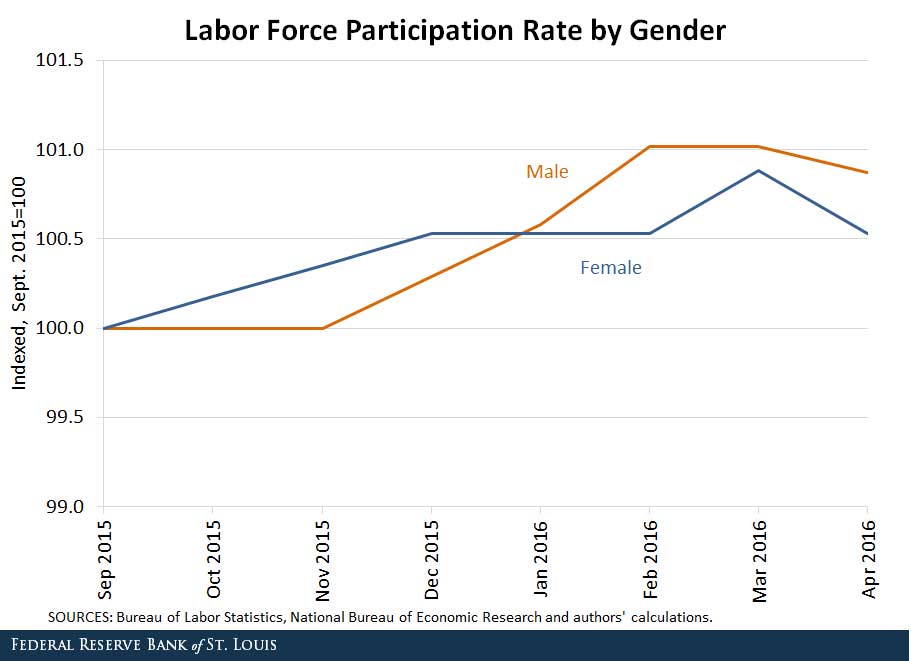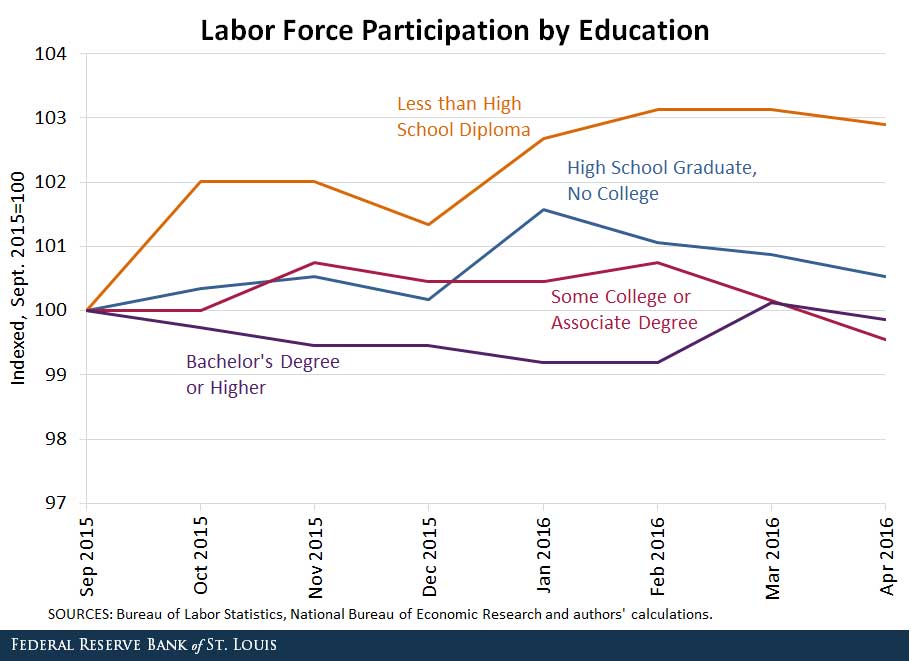Why Is the Labor Force Participation Rate Increasing?
The unemployment rate in the United States has been declining since the Great Recession ended in mid-2009.1 This decline has been partly due to discouraged workers leaving the labor force, as illustrated by the decrease in the labor force participation rate in the figure below.2

However, the labor force participation rate has started to increase after trending downward since the end of the recession. It rose from 62.4 percent in September to 63 percent in March before settling at 62.8 percent in April. During this period, the unemployment rate continued decreasing, reaching 5 percent in April.
A closer look at the labor force participation rate is important to understand what is behind this trend. To do that, we decomposed labor force participation by gender, age and education levels for the period beginning in September.



Several patterns emerged from these figures. First, we observed that the increase in female participation led to the increase in the labor force participation rate before November. However, the male participation rate has been increasing at a faster pace since then.
Second, the labor force participation rate has risen across all age categories:
- 54.5 percent to 55.2 percent for ages 16-24
- 80.6 percent to 81.2 percent for ages 25-54
- 39.7 percent to 40.1 percent for ages 55 and above
The most interesting patterns arose when we looked at labor force participation by levels of education. We observed that the lowest education group increased its participation rate the most, from 44.8 percent to 46.1 percent. The highest education group, however, saw an overall slight decrease in its participation rate. For other education groups, there was not a clear trend.
Based on the above decompositions, we concluded that the recent increase in the labor force participation that we observed has been mainly driven by males and the lowest education workers.
Notes and References
[1] The unemployment rate is the fraction of the labor force that is unemployed (jobless, actively searching for a job and available to take one). The labor force is comprised of employed and unemployed people in the working age population.
2 The labor force participation rate is the fraction of the total working age population that is in the labor force.
Additional Resources
- On the Economy: Why Do Gas Prices Cycle in the Midwest?
- On the Economy: Nearly Half of Job Switchers Earn Less in Their New Roles
- On the Economy: Many Negative Labor Market Trends Started before the Great Recession
Citation
Ana Maria Santacreu and Usa Kerdnunvong, ldquoWhy Is the Labor Force Participation Rate Increasing?,rdquo St. Louis Fed On the Economy, May 19, 2016.
This blog offers commentary, analysis and data from our economists and experts. Views expressed are not necessarily those of the St. Louis Fed or Federal Reserve System.
Email Us
All other blog-related questions

